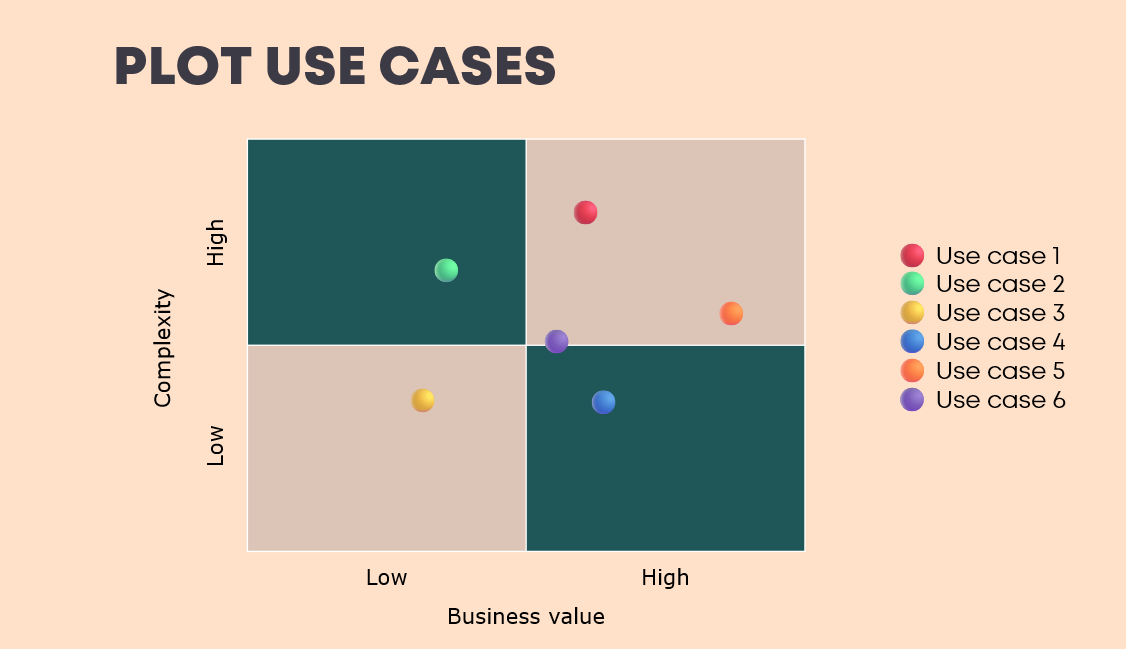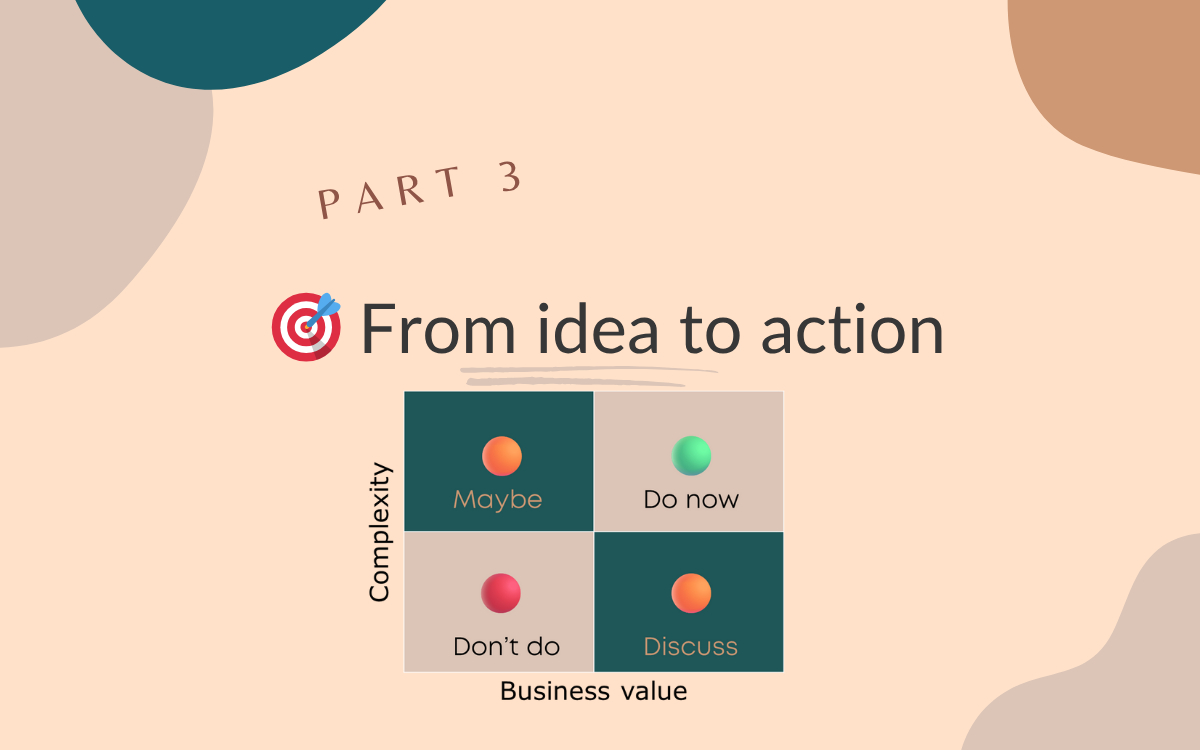🎯 From idea to action: smart prioritization with business value analysis
Sep 27, 2025 • 3 • 556
Table of contents
Power Platform adoption isn’t just about collecting ideas: it’s about choosing the right ideas. And that’s where many organizations get stuck.
After setting up a clear submission process and using a structured business case , the next challenge emerges: Which ideas do you tackle first?
The problem: too many good ideas
💡A good idea isn’t necessarily a good plan.
With the Power Platform, you can build something incredibly fast. And that makes it tempting to just start. Quickly create an app, click together a flow… done!
But as soon as you want to make serious impact, you need to go back to basics: What does this deliver? And for whom?
The solution: business value analysis
That’s why we often start with a business value analysis. Not complicated, but well thought-out.
We plot ideas in a quadrant with:
- Y-axis: Complexity (low ← → high)
- X-axis: Business Value (low ← → high)

The four quadrants explained
🟢 DO NOW (Low complexity, High business value) These are your quick wins. Projects that are fast to implement and add immediate value. Perfect for building momentum and securing early successes.
Example: A simple approval flow for leave requests that saves 2 hours per manager weekly.
🟡 MAYBE (Low complexity, Low business value) Small projects with little impact. Not necessarily wrong, but only tackle them if you have time to spare. They can serve as learning moments for beginning makers.
Example: An app to track coffee inventory.
🔴 DON’T DO (High complexity, Low business value) The pitfall. Projects that consume lots of time and energy but deliver little value. Park these ideas or look for simpler alternatives.
Example: Building a fully integrated CRM system in Power Apps while you already have a working system.
🟠 DISCUSS (High complexity, High business value) The strategic projects. Big impact, but also big investments. These deserve thorough discussion and planning. Maybe they can be split into smaller parts?
Example: Complete digitalization of your HR processes.
Practical application
Step 1: Plot your ideas
Take all submitted business cases and place them in the quadrant. Involve different stakeholders in this exercise—different perspectives lead to better decisions.
Step 2: Prioritize consciously
- Start with all “DO NOW” projects
- Choose 1-2 “DISCUSS” projects for the long term
- Use “MAYBE” projects as filler or training material
- Explain “DON’T DO” projects to the submitters—transparency prevents frustration
Step 3: Communicate clearly
Share the quadrant with your organization. Show how decisions are made. This builds trust and helps people submit better ideas.
The result: targeted investment
So you can see at a glance which ideas deliver quick results. And which ones you might better park for now.
It helps organizations invest more strategically in what really matters. Instead of a random collection of apps and flows, you systematically build solutions that truly make an impact.
Why this works
This approach ensures:
- Faster decision-making: No more endless discussions
- Better stakeholder buy-in: Everyone understands the logic
- Measurable success: Quick wins build confidence
- Smarter resource allocation: Time and budget go to the right projects
Next steps
Already have a pile of ideas lying around? Try this quadrant method. It’ll help clarify priorities.
And remember: a good Power Platform adoption story isn’t about the number of apps you build, but about the value they add.
Because ultimately, it’s not about what you can build, but what you should build.

